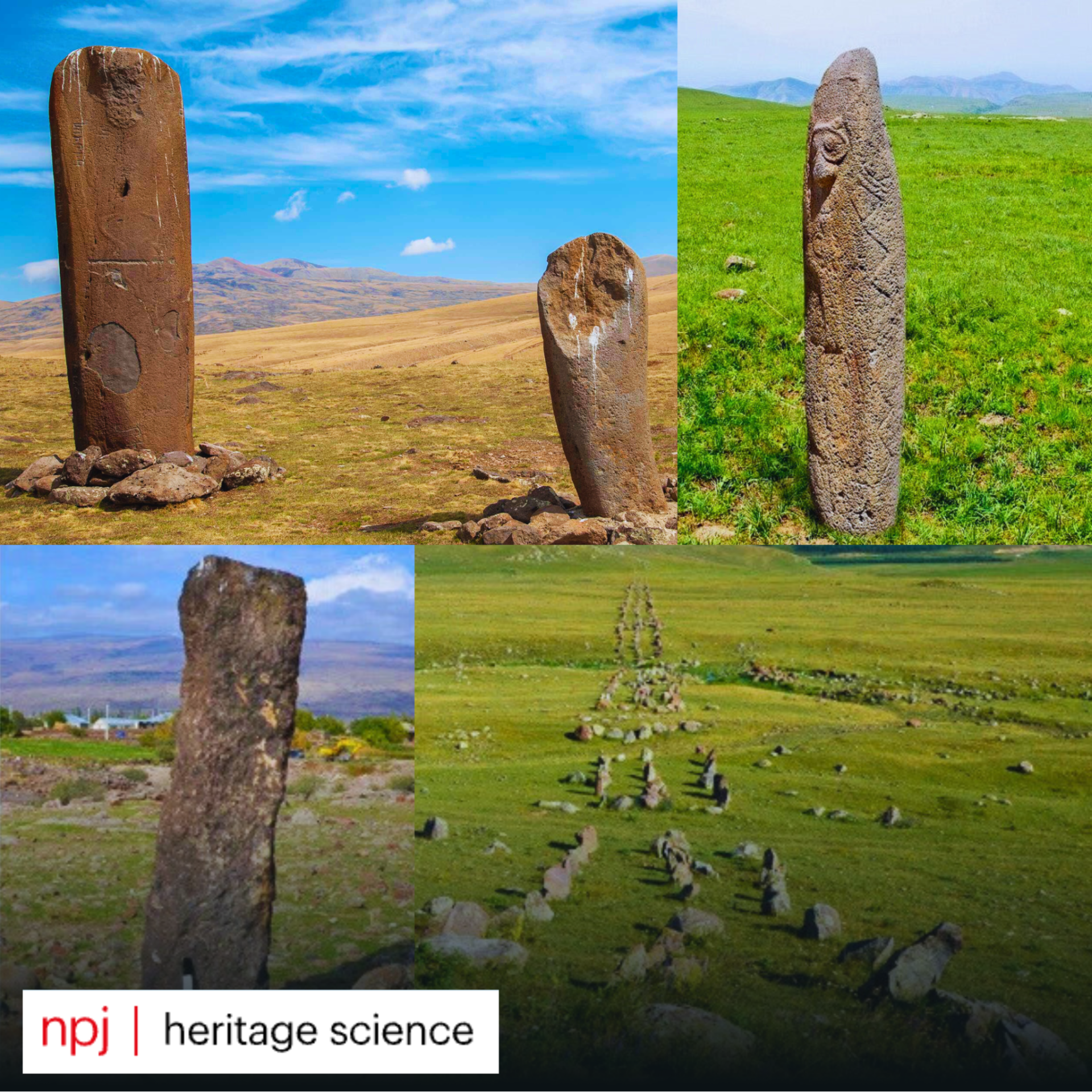A group of Armenian and European archaeologists has unveiled new research on Armenia’s prehistoric “dragon stones,” known as vishaps (or vishapakars), in a study published in the Nature Portfolio journal npj Heritage Science. The findings, based on the first comprehensive statistical analysis of these megaliths, reveal that the monuments were deliberately constructed and positioned—often at great effort—as part of ancient water-centered rituals dating back to the Chalcolithic period.
The study, led by Vahe Gurzadyan and Arsen Bobokhyan of Yerevan State University and the Institute of Archaeology and Ethnography (NAS RA), with contributions from colleagues at the Free University of Berlin, Ca’ Foscari University of Venice, and Cornell University, analyzed the size and elevation of 115 known vishaps across Armenia and adjacent regions. These stones, carved from andesite or basalt, range from 1.1 to 5.5 meters in height (up to 18 feet) and fall into three distinct types: piscis (fish-shaped), vellus (stylized cattle hide), and hybrida (a mix of the two).
Water as the Central Motif
Most vishaps are found near springs, streams, or ancient irrigation systems, reinforcing the long-standing view that they were linked to a water cult—venerating water as a life-giving force for valley communities. The fish-shaped vishaps in particular are concentrated at the highest elevations, symbolically close to the sources of snowmelt that sustained agriculture below.
The study also revealed a bimodal distribution in vishap locations, with two distinct altitude clusters around 1,900 meters and 2,700 meters. This structured placement suggests possible connections to seasonal migrations, ritual routes, or pilgrimage activities.
A Window into Prehistoric Religion
Dating vishaps has long been difficult since they were often placed far from ancient settlements. However, radiocarbon samples at the key site of Tirinkatar on Mount Aragats provide clear evidence that some monuments were erected as early as 4200–4000 BCE, during the Chalcolithic period. Over millennia, the site developed into a ritual landscape containing cromlechs, cairns, and petroglyphs.
Many of the stones now lie collapsed, but their uncarved “tails,” carvings on all sides, and stone platforms show that they originally stood upright, dominating the sacred highland terrain.
“Vishaps are not just isolated artifacts — they are part of a complex sacred topography,” the researchers write. “Their placement and size suggest a deep social and religious significance, reflecting the community’s investment in maintaining cosmic and ecological balance.”
Cultural Continuity and Later Reuse
The research shows that vishaps were not forgotten after prehistory. Some were later inscribed in the Urartian language between the 9th and 6th centuries BCE, and others even bear Armenian-script carvings dating to the medieval period. This reuse demonstrates their enduring role as cultural and sacred landmarks. Scholars also note that vishaps may have influenced the tradition of khachkars (cross-stones), which became central symbols of Armenian Christian identity after the adoption of Christianity.
Interpreting the “Dragon” Name
Although the monuments are commonly referred to as “dragon stones,” their carvings most often depict fish and other animals connected to water symbolism. The “dragon” designation is a later interpretation; the original meaning of the monuments remains unknown.
Immense Human Effort
The study highlights the extraordinary energy invested by ancient highland communities to carve, move, and raise these stones at remote mountain sites. Their locations show that vishaps were not simply erected where the material was quarried, but intentionally transported to sacred water sources—an effort that underscored their ritual and symbolic importance.
Global Significance
The authors emphasize that the study of vishaps contributes to the global understanding of high-altitude ritual landscapes, comparable to megalithic monuments in Europe or ceremonial sites in the Andes. The research also highlights the urgent need for preservation, as many vishaps remain collapsed or displaced from their original locations.
This study provides one of the clearest pictures yet of how early societies in the Armenian Highlands related to their environment—and the extraordinary efforts they undertook to honor the water that sustained them.


